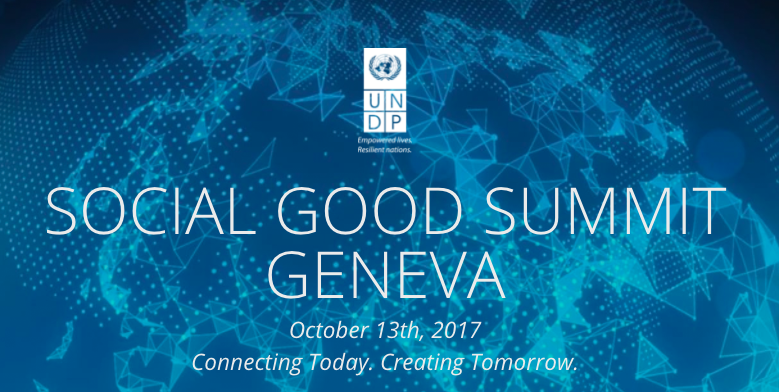De-risking Mechanisms Can Increase Private Capital to Achieve the SDGs.

by Marcos Athias Neto, Director, UNDP Istanbul International Center for Private Sector in Development and Alexandra Soezer, UNDP Climate Change Technical Advisor
The SDGs represent an unprecedented global consensus to align our efforts for the next 13 years on a comprehensive and ambitious development agenda for people and the planet. This level of ambition now needs to be matched with the necessary resources, innovation capacity and partnerships to drive implementation. The private sector, in this context, is an indispensable partner. In developing countries, private sector operations constitute 60 percent of GDP, while generating 90 percent of jobs and 80 percent of capital inflows. For private sector to fully embrace the SDGs, an enabling environment that encourages innovation, and better values inclusion and sustainability, is needed. This requires innovative public policy and legislative reforms, informed by multi-stakeholder policy dialogue.[1] [2]
The good news is that there is a clear business case for the private sector to invest in SDG implementation. By developing new business models to meet the demands of the base of the pyramid[3] (people with less than US$10 per day in purchasing power) and by investing in sustainable approaches in areas such as agriculture, cities, energy and health, new economic opportunities of up to US$12 trillion could be generated.[4]
Private sector opportunities and investments will be extremely important for SDG 9, resilient infrastructure. For example: to transform existing infrastructure into green infrastructure that promotes among others renewable carbon energy, energy efficient buildings, recycling and reuse of materials, electric vehicles is estimated at US$ 94 trillion over the next 15 years, two third of it in developing countries[5].
While there is a gap in green investments in developing countries, there is no lack of global debt capital. If we strategically tap into the existing US$ 200-300 trillion[6] of traditional investments and mainstream finance for the SDGs in all its forms, we could increase private capital at scale to achieve a paradigm shift.
When it comes into SDG 13 on Climate Action and promoting climate finance, we see already commitments from large financial institutions such as J.P. Morgan, Citigroup and the Bank of America. These banks have committed to a combined amount of US$ 425 billion of low carbon, environment and energy finance[7].
Bold actions are needed to channel existing assets into green investments in developing countries, from public and private actors, from developed and developing countries’ governments, multilateral governments, insurances and export credit agencies and down to institutional investors and citizens. By mobilizing key actors in a concerted effort, we can achieve the scale needed to implement the world we promised to the next generation at COP21 in Paris.
To transform the economics of interest rates, foreign currency and credit risk management practices for green investments, financial returns could be linked to concrete carbon reductions. An innovative example of such an approach is the Paris Climate Bond, which links global loan products directly to mitigation outcomes. Banks that structure loans for infrastructure investment around monetized carbon reductions could incentivize green lending through new customized green products, develop a market for franchise lending in developing countries, and rigorously shift investment decisions towards green investments.
To scale-up climate finance, engage the civil society and reach individual investors, innovative business models are needed that blend public and private finance to de-risk investments of individuals. An innovative example is the business model of the impact investment platform Trine, which offers a guarantee fund to cover up to 75% of the principle investment of crowd investors in case of project failure.
Public sector-encouraged close collaboration between export credit agencies, insurers, project aggregators and the global debt capital market has the potential to lead to green infrastructure investments in developing countries at the necessary ‘industrial scale’. A global project identification and development machinery can activate projects in all regions of the world and link them to large, institutional investors, while at the same time facilitating access to government endorsed export guarantees for green technologies and state-of-the-art insurance products to address investors’ concerns to enter immature markets. By matching de-risking products that have the potential for a fast transformational change in developing countries, and linking investment products to a concrete green result, green investments can contribute directly to developing countries’ climate pledges.
There is sufficient scientific and political awareness of the urgency to act. There is a general agreement among G20 countries that bold actions today will reduce the costs of adapting to climate change by one fifth and a lack thereof would increase the costs and reach 20% of the global GDP in 2030[8].
The financial solutions and means are known to all. Therefore, there is no justification for postponing bold actions today and no reason to apologize tomorrow.
[1] OECD. “Development Co-operation Report: Making Partnerships Effective.” 2015.
[2] Achim Steiner, UNDP Administrator, Welcoming remarks at UNGA Side Event ‘Partnerships for Inclusive Growth: Private sector investment in the SDGs”, 15:00 - 18:00 – 22 September 2017
[3] Base of the Economic Pyramid (or BOP) is used to describe men and women who are low-income or who lack access to basic goods and services. The low-income segment is commonly considered to include people with up to US$10/day in purchasing power parity terms (PPP) in 2015 USD. Calculated by BCtA based on 2015 inflation rate: http://data.worldbank.org/indicator/FP.CPI.TOTL.ZG?page=1
[4] Business & Sustainable Development Commission. "Better Business Better World." 2017.
[5] The New Climate Economy, 2016
[6] Credit Suisse Research Institute, 2016: Global Wealth Report
[7] https://www.jpmorganchase.com/corporate/Corporate-Responsibility/document/jpmc-cr-sustainability-fact-sheet.pdf; http://www.citigroup.com/citi/environment/environmentalfinance.htm; https://about.bankofamerica.com/en-us/what-guides-us/environmental-sustainability.html#fbid=YHRzkv0rVja
[8] UNEP, 2016: Emission Gap Report
